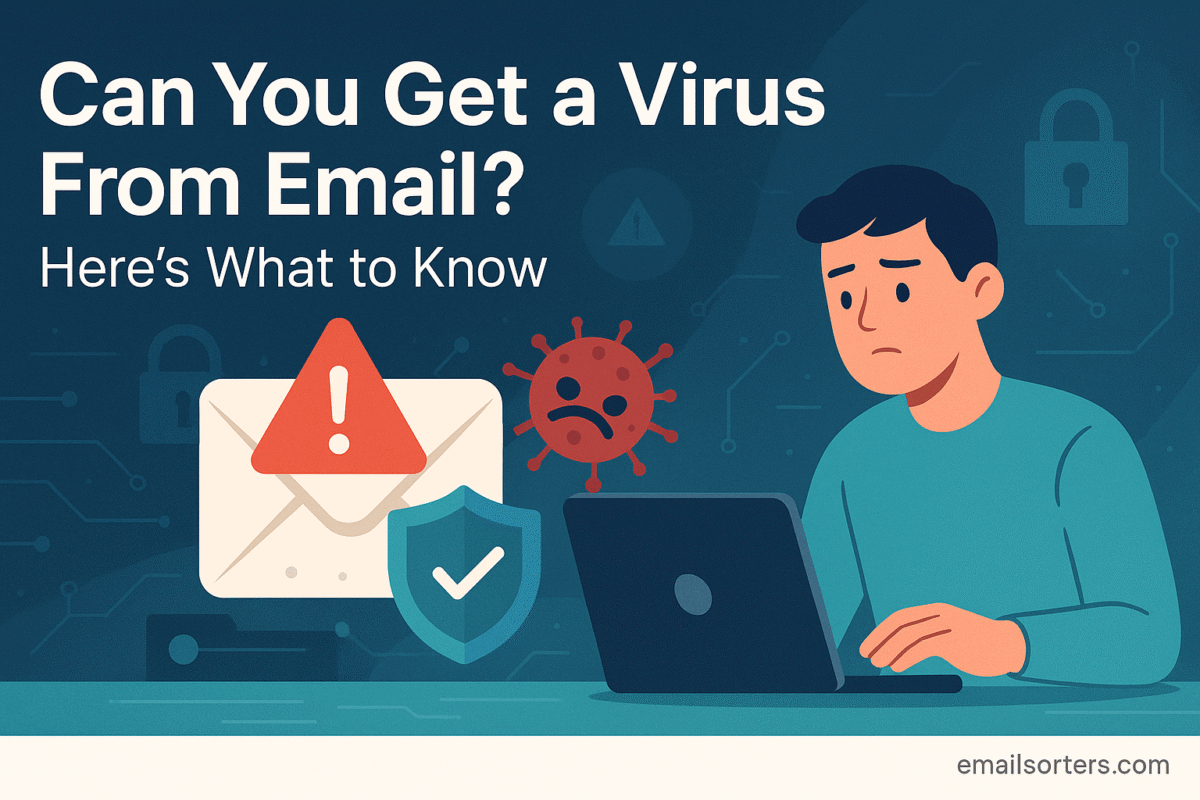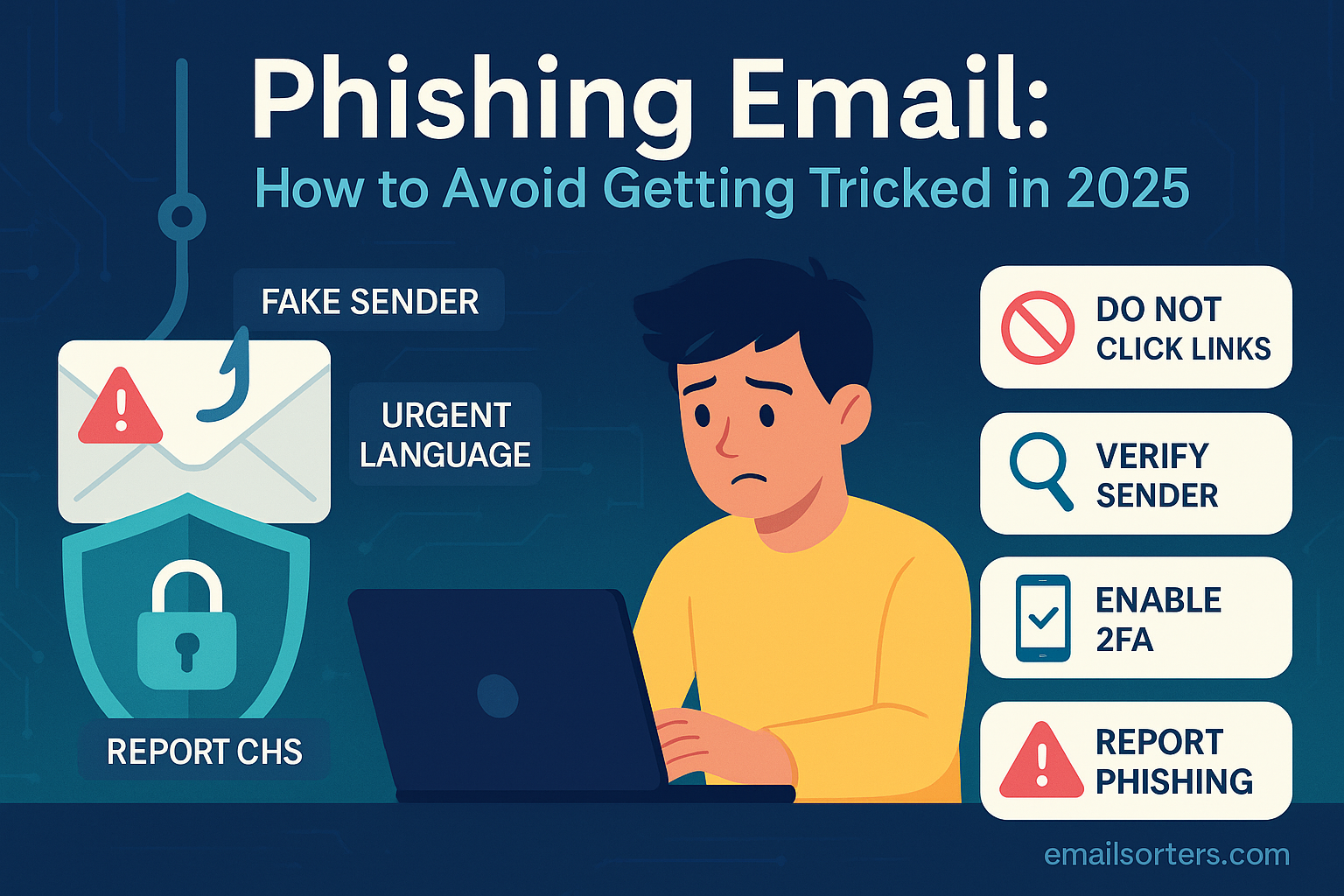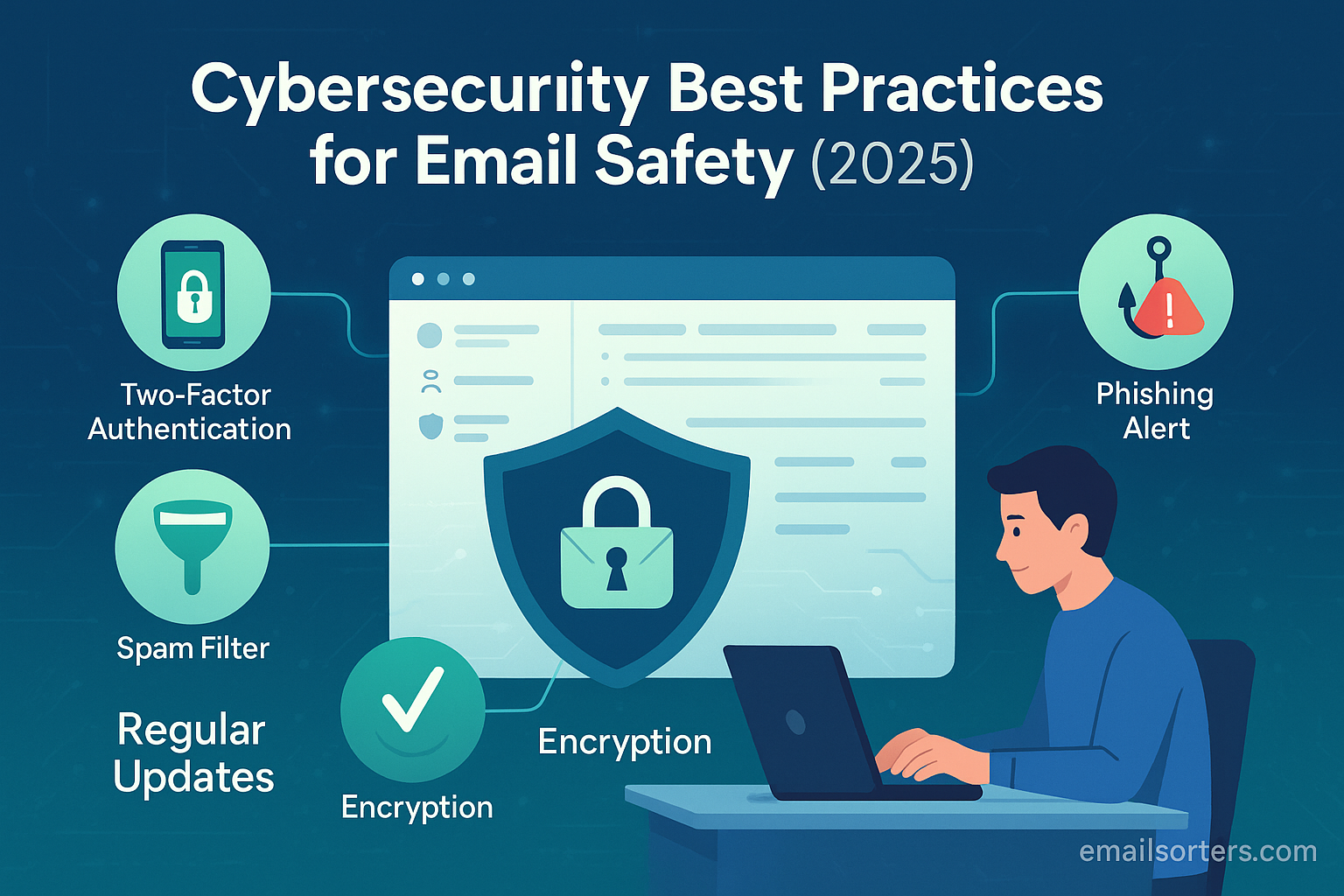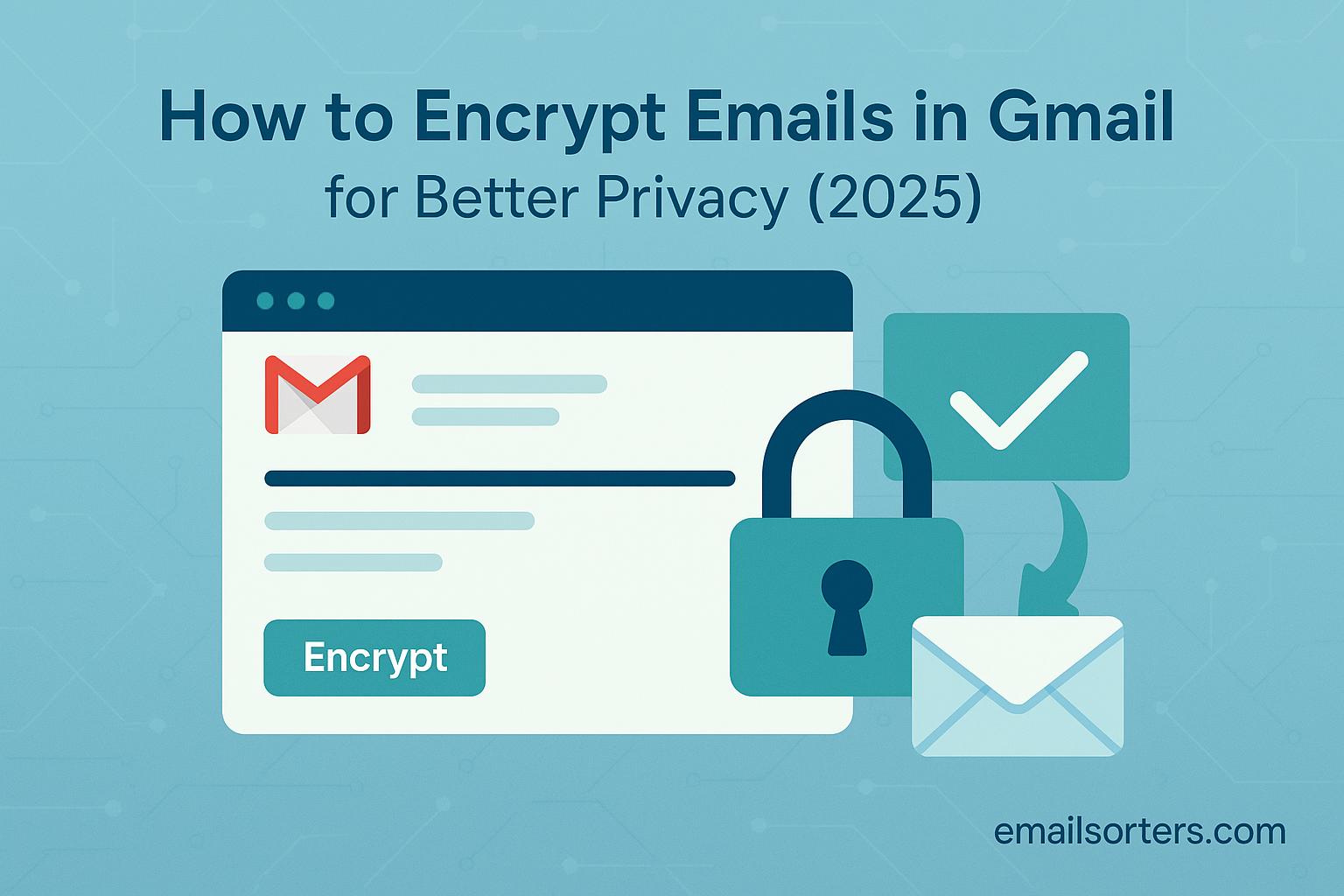A definitive 2025 guide explaining if you can get a virus from an email. Learn about malware, phishing, and malicious attachments, and how to protect your computer.
Can simply opening an email infect your computer with a virus? It is a question that evokes a deep sense of digital anxiety for many. Given that your inbox is the primary gateway for your personal and professional communication, the fear that a hidden threat could be lurking in any message is understandable. This uncertainty often leads to confusion about what is safe to click, what is safe to open, and what should be deleted on sight.
The simple truth is that the landscape of email threats in 2025 is more complex than a straightforward yes-or-no answer can accommodate. While the act of merely rendering the text of an email in a modern, updated client is generally safe, the real danger lies not in the message itself, but in the malicious cargo it might be engineered to carry. The true threats are the actions you are persuaded to take after you open that email: clicking a deceptive link, downloading a weaponized attachment, or enabling a hidden script. Cybercriminals are masters of social engineering, and their primary goal is to trick you into opening the door for them.
Imagine navigating your inbox with clarity and confidence, armed with the knowledge to distinguish a legitimate message from a cleverly disguised attack. Picture the control that comes from understanding the exact tactics used by attackers, allowing you to identify and neutralize threats before they have a chance to do harm. This state of empowerment is not reserved for cybersecurity experts; it is achievable for anyone willing to learn how these threats operate.
This guide will provide a comprehensive, in-depth explanation of the entire spectrum of email-borne threats. We will demystify how viruses and other malware are delivered, explore the psychological tricks attackers use, and provide you with the actionable knowledge and tools required to make your inbox a secure and trusted environment.
The Short Answer and the Important Distinction
Let us address the main question directly. In today’s environment, it is exceptionally rare to get a virus simply by opening and viewing the body of a standard email. Modern email clients and webmail services like Gmail and Outlook have been specifically designed with security in mind. They have protections in place that prevent scripts from running automatically just from an email being opened. Years ago, some older email clients had vulnerabilities that could be exploited in this way, but those security holes have long since been patched.
The critical distinction to understand is this: the danger is not in passively viewing the email, but in actively interacting with its contents. The infection occurs when you, the user, take a specific action that executes a malicious command. This action is almost always one of three things: downloading and opening a malicious attachment, clicking a link that leads to a dangerous website, or enabling macros within a seemingly harmless document.
The Primary Threat Vector: Malicious Attachments
The most common method for delivering malware via email is through an attachment. Attackers have become incredibly skilled at disguising malicious programs as legitimate and even boring documents, preying on our curiosity or sense of urgency.
The way this works is by embedding or disguising executable code within files that you are likely to trust. For example, an attacker might send an email with a subject line like “Invoice Due” or “Shipping Confirmation” and attach a file. When the unsuspecting user downloads and opens the file, they are not opening a document; they are running a program designed to infect their computer.
Certain file types are far more dangerous than others. The most overtly dangerous are executable files, which have extensions like .exe, .bat, .com, or .scr. These are direct applications, and you should treat any unexpected executable attachment with extreme suspicion. Modern email services will often block these file types outright, but attackers have found ways around this. A common tactic is to place the malicious executable file inside an archive file, such as a .zip or .rar file. Because the email scanner only sees the “safe” archive file, it may allow the attachment through, leaving it up to the user to extract and run the dangerous file within.
Another highly prevalent threat comes from Microsoft Office files, such as Word documents (.docm), Excel spreadsheets (.xlsm), or PowerPoint presentations (.pptm). These files can contain macros, which are small scripts designed to automate tasks within the Office suite. While macros have legitimate uses, attackers use them to write scripts that download and install malware. Microsoft has disabled macros by default for security reasons. Therefore, the attacker’s first goal is to trick you into enabling them. The document itself will often contain a message like “This document is protected. Please click ‘Enable Content’ to view it correctly.” The moment you click that button, you are giving the malicious script permission to run and infect your system.
Even PDF files, which are often considered safe, can be a vector for attack. While a standard PDF document is not a program, it can contain embedded elements like JavaScript or links that direct your browser to a malicious website. Always be cautious when a PDF you have opened asks for permission to run a script or connect to the internet.
The Hidden Danger: Malicious Links and Phishing
The second major attack vector is the use of malicious links within the body of the email. In this scenario, the email itself contains no virus. Instead, it is a lure designed to get you to click a link that takes you to a dangerous location on the web.
One type of threat from these links is a “drive-by download.” This occurs when you visit a compromised website that has been specifically engineered to exploit vulnerabilities in your web browser or its plugins. In some cases, the malware can begin downloading and installing itself the moment the page loads, without any further action on your part. This is why keeping your web browser and operating system fully updated is one of the most important security measures you can take, as updates often contain patches for these very vulnerabilities.
The more common threat from malicious links is phishing. Phishing is a form of fraud where the attacker creates a web page that is a pixel-perfect replica of a legitimate site, such as your bank’s login page, a social media site, or your corporate email portal. The email will contain an urgent message, such as “Unusual login detected, please verify your account now,” and provide a link.
When you click it, you are taken to the fake page. If you enter your username and password, you are not logging in to the real service; you are handing your credentials directly to the attacker. Learning how to avoid phishing emails is a foundational skill for digital safety.
To protect yourself, you must become diligent about inspecting links before you click them. In most desktop email clients and web browsers, you can hover your mouse cursor over a link, and the true destination URL will appear in the bottom corner of your screen. Look for misspellings or unusual domain names. An email might say it is from your bank, but if the link points to a strange address like yourbank.secure-login.info instead of yourbank.com, it is a scam.
A Rogues’ Gallery: Types of Email-Borne Malware
“Malware” is a general term for any software designed with malicious intent. It is helpful to understand the different types of malware that are commonly delivered through email.
A virus is a piece of code that attaches itself to a legitimate program. It cannot spread on its own and requires a host file. When you run the infected program, you also activate the virus, which can then replicate and attach itself to other programs on your computer.
A worm is a more sophisticated piece of malware that is self-replicating and does not need a host program. Worms are designed to spread rapidly across networks. A common way they propagate is by gaining access to a user’s email account, reading their address book, and then sending a copy of themselves to all of the user’s contacts.
A Trojan, short for Trojan Horse, is malware that is disguised as legitimate, useful software. You might download what you think is a helpful utility or a fun game, but once you run it, the hidden malicious code activates in the background.
Ransomware is a particularly nasty form of malware that has become very common. Once it infects a computer, it systematically encrypts all of your personal files—documents, photos, videos—making them completely inaccessible. The program then displays a message demanding a ransom payment, often in cryptocurrency, in exchange for the decryption key needed to recover your files.
Finally, Spyware and Keyloggers are designed for stealth. They install themselves on your system and secretly record your activity. Spyware might monitor your Browse habits, while a keylogger specifically records every keystroke you make, allowing attackers to capture your usernames, passwords, credit card numbers, and private messages.
The Human Element: Social Engineering Is the Key
It is crucial to understand that nearly every successful email attack relies on social engineering—the psychological manipulation of people into performing actions or divulging confidential information. Technology can build strong walls, but attackers know that it is often easier to trick the person inside than to break down the wall.
They use a variety of tactics to achieve this. One is pretexting, where they create a believable fabricated scenario to build trust. An attacker might pose as a representative from your IT department and claim they need your password to perform system maintenance. They also heavily rely on creating a sense of urgency and fear. Subject lines like “Your Account Has Been Suspended” or “Urgent Action Required” are designed to make you panic and act before you have had time to think critically. Being able to identify the patterns of scammer email addresses and the manipulative language they use is a vital defense.
How to Protect Yourself: A Multi-Layered Defense
There is no single solution that can make you immune to email threats. Effective protection requires a multi-layered approach that combines technical defenses with vigilant user behavior.
Your technical defenses include using a reputable antivirus and anti-malware program and, most importantly, keeping all of your software up to date. This means enabling automatic updates for your operating system, your web browser, and other critical applications. These updates frequently contain security patches that close the vulnerabilities attackers seek to exploit.
However, the most important layer of defense is you, the human firewall. You must cultivate a healthy and permanent sense of skepticism toward unsolicited emails. Adopt a “when in doubt, throw it out” mentality. Never open an attachment you were not explicitly expecting, even if it appears to be from someone you know, as their account could have been compromised.
If you receive a suspicious or unusual request from a colleague or your boss, verify it through a separate communication channel, such as a phone call or a direct message. Always take a moment to hover over links before you click them to ensure they lead where they claim. These habits are the core of strong email cybersecurity best practices and can dramatically reduce your vulnerability to attack.
What to Do If You Suspect You’ve Been Infected
If you accidentally click a bad link or open a malicious attachment and suspect your computer is infected, you should act quickly.
First, immediately disconnect the device from the internet by turning off Wi-Fi or unplugging the network cable. This can prevent the malware from spreading to other devices on your network or sending your data out to the attacker.
Next, use a trusted, up-to-date antivirus program to run a full system scan to find and remove the threat. After the scan is complete, you must change the passwords for your critical accounts, such as your email, banking, and social media, but do so from a separate, known-clean device. If your computer has been hit with ransomware, you may need to seek professional help to explore recovery options.
The Concept of a ‘Viral Email’
The term viral email has traditionally been used to describe things like chain letters, hoaxes, or inspirational messages that spread rapidly as people forward them to their contact lists. While these are typically harmless, the underlying mechanism of rapid, user-driven propagation is something that malware creators have weaponized.
A modern email worm can create a similar effect, but for a malicious purpose. Once it infects a user’s machine, it can hijack their address book and automatically send itself to all of their contacts. Because the email appears to come from a trusted friend, the recipients are much more likely to open the attachment or click the link, allowing the malware to “go viral” across a social network dangerously and destructively.
Technology will always provide a strong shield against a large volume of threats, but it will never be infallible. The most sophisticated attacks are designed to bypass that shield and target the user directly. Your informed caution, your healthy skepticism, and your refusal to be rushed into a bad decision are what ultimately serve as the gatekeeper of your digital security. You are the last, and most important, line of defense.
Frequently Asked Questions
1. Is it safe to open an unknown email if I don’t click anything?
In almost all cases, yes. Modern email clients and services are secure enough that simply opening and reading the text of an email will not infect your device. The danger comes from taking the next step: clicking a malicious link, downloading and running an attachment, or enabling macros in a document. Viewing is safe; interacting is where the risk lies.
2. Can my phone get a virus from an email?
Yes, your phone is also vulnerable to malware delivered via email, though the infection process is slightly different. The most common threat on mobile is being tricked into downloading a malicious app. An email might contain a phishing link that directs you to a fake website encouraging you to install an app. If you download and install this app from outside the official Apple App Store or Google Play Store, it can infect your phone. The core advice remains the same: do not click suspicious links or download unknown files, regardless of the device you are using.
3. Will my antivirus software protect me from all email viruses?
Antivirus software is an essential layer of security, but it is not foolproof. It is very effective at detecting and blocking known viruses and malware by matching them against a database of signatures. However, it may not be able to stop brand new, “zero-day” threats that it has never seen before. Furthermore, antivirus software cannot protect you from phishing attacks that rely solely on tricking you into voluntarily giving up your password on a fake website. It is a critical tool, but it must be combined with your own vigilance.
4. What should I do with a phishing or spam email after I identify it?
Do not just delete it. The best action you can take is to report it. Email clients like Gmail and Outlook have built-in features to “Report spam” or “Report phishing.” Using these buttons not only removes the email from your inbox but also sends valuable data to your email provider. This information helps them improve their global filtering systems, making it harder for that same attack to reach other users.
5. The email is from my friend’s address, but it looks suspicious. What should I do?
Trust your instincts. Email addresses are surprisingly easy for attackers to forge or “spoof.” Even if the email is from a known contact, if the language is unusual, the request is strange (like asking for money or gift cards), or it contains an unexpected attachment, be very cautious. The safest course of action is to contact your friend through a different communication channel, like a text message or phone call, to verify if they actually sent the email. Never reply directly to the suspicious message.




